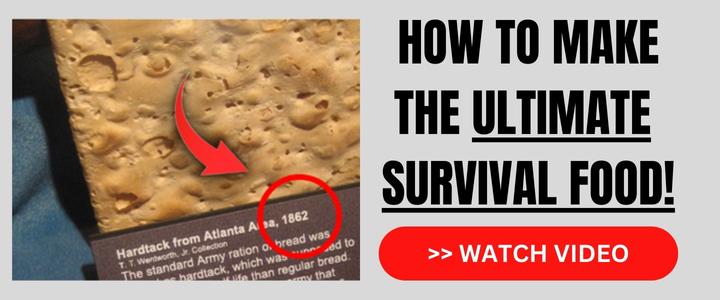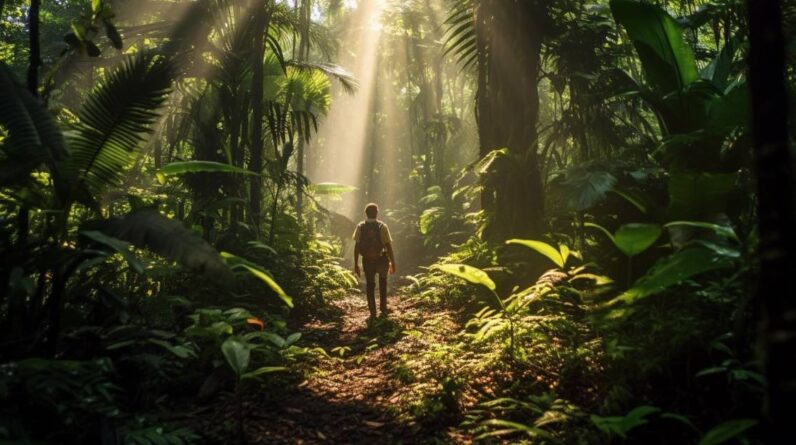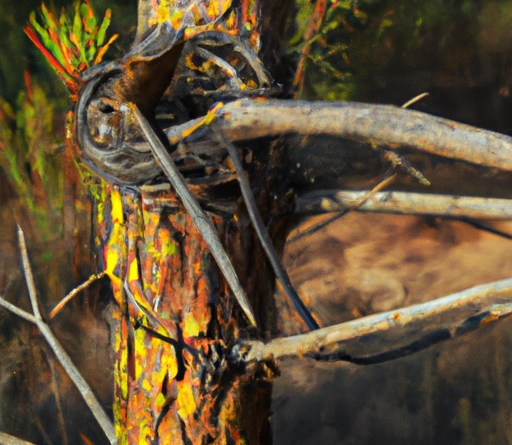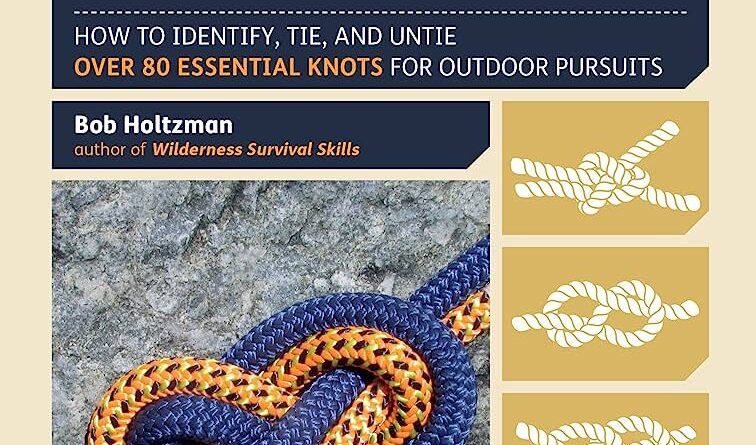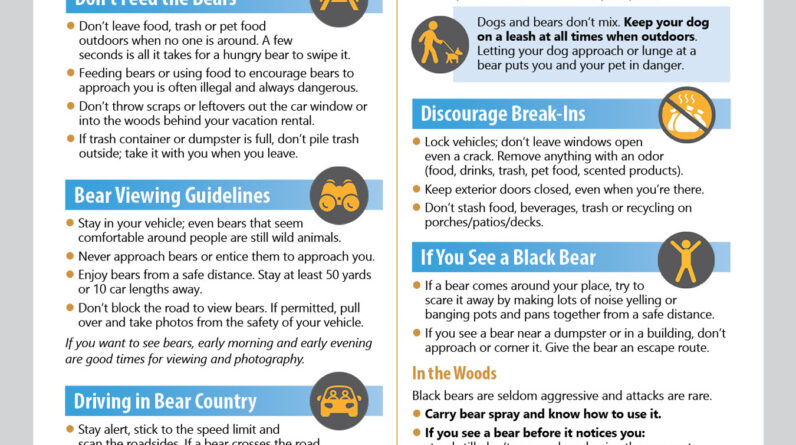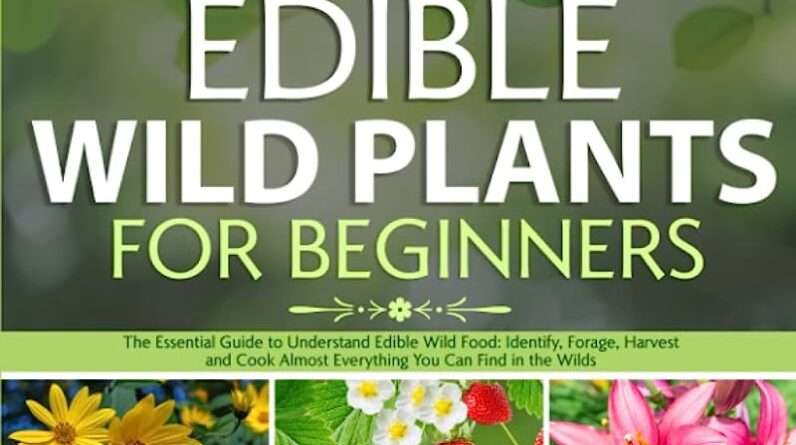
Introduction
Welcome to a guide that will equip you with essential tips for identifying edible plants in the wilderness. Whether you are an avid hiker, outdoor enthusiast, or simply someone who wants to be prepared for unexpected circumstances, knowing how to distinguish between edible and poisonous plants is crucial for your safety and well-being.
Understanding the Importance of Identifying Edible Plants
In the wilderness, where modern conveniences are scarce, being able to identify edible plants can be a game-changer. It not only ensures that you have access to a source of food, but it can also enhance your overall survival skills. By correctly identifying edible plants, you are empowering yourself to sustain your nutritional needs in a resource-limited environment.
Benefits of Foraging for Edible Plants in the Wilderness
Foraging for edible plants offers numerous advantages. Firstly, it allows you to connect with nature on a deeper level, gaining a greater appreciation for the environment and the abundance of resources it provides. Secondly, it can enhance your self-reliance and independence, as you become less dependent on store-bought food. Additionally, foraging for edible plants can serve as a skill-building exercise, honing your knowledge of botany and enhancing your ability to adapt to different environments.
In this guide, we will explore various tips and techniques for identifying edible plants, including visual cues, characteristics, and possible look-alikes to watch out for. Stay tuned to discover the fascinating world of edible plants in the wilderness and enrich your outdoor experiences with this valuable knowledge.

Educating Yourself
When venturing into the wilderness, it’s crucial to educate yourself about identifying edible plants. This knowledge can be essential for survival, ensuring you can nourish yourself while surrounded by nature’s bounty. Here are some essential tips to help you get started.
Researching common edible plant species in your region
Begin by researching the common edible plants in your specific region. Each area may have different plants that are safe to consume, so it’s important to familiarize yourself with the local flora. Online resources and field guides can provide valuable information on which plants are edible and which ones to avoid. Take note of their appearance, habitat, and any distinct features that can help you accurately identify them.
Studying plant identification guides
Invest in a reliable plant identification guide that focuses on edible plants. These guides are packed with detailed descriptions, images, and information that will help you confidently identify different species. Study these guides thoroughly, paying attention to the specific characteristics that distinguish edible plants from their non-edible counterparts. Familiarize yourself with important identifiers such as leaf shape, stem texture, and flower color.
Taking a plant identification course
Consider taking a plant identification course to deepen your knowledge and understanding. These courses offer hands-on learning experiences, allowing you to practice identifying edible plants under the guidance of experts. By joining a course, you’ll gain practical skills and the confidence necessary to safely identify edible plants in the wild.
Remember, the more you educate yourself about edible plants, the better equipped you’ll be to identify them in the wilderness. So, invest time in researching, studying plant identification guides, and perhaps even taking a course. These steps will enhance your ability to find and enjoy nature’s edible treasures while exploring the great outdoors.
Observing Plant Characteristics
When it comes to identifying edible plants in the wilderness, one of the most crucial skills you can develop is the ability to observe and analyze plant characteristics. By paying close attention to leaf shapes, sizes, and textures, you can gain valuable insights into which plants are safe to eat and which should be avoided.
Examining leaf shapes, sizes, and textures
Take a moment to closely examine the leaves of the plant in question. Are they simple or compound? Are they smooth, fuzzy, or prickly? Leaf shape and texture can provide important clues about a plant’s identity. For example, plants with jagged or toothed edges are often better to avoid, as they can indicate toxicity.
Identifying flowers and fruits
Flowers and fruits are another key aspect to consider when identifying edible plants. Examine the flowers closely to determine their shape, size, and color. Is there a strong scent? Similarly, inspect the fruits or seeds. Are they brightly colored and plump? These characteristics can be indicators of edibility.
Noting distinct plant features for accurate identification
In addition to examining leaves, flowers, and fruits, it’s important to make note of any distinct features that set a plant apart. This could include the presence of thorns, unique patterns on the leaves, or a specific growth habit. These unique traits can help you accurately identify edible plants and avoid potential dangers.
Remember, while these tips can be helpful, it’s always best to consult a reliable field guide or seek guidance from an experienced forager before consuming any wild plants. Practice patience and caution when exploring for edible plants, and enjoy the rewarding experience of connecting with nature’s bounty.
Utilizing Plant Parts
When it comes to identifying edible plants in the wilderness, knowing which parts of the plant are safe to consume is crucial. This section will provide you with essential tips to help you determine edible plant parts, avoid toxic or poisonous plant parts, and explore different cooking methods for various plant parts.
Determining Edible Plant Parts
To identify which parts of a wild plant are safe to eat, there are a few key characteristics to look for. Edible plant parts often include leaves, stems, flowers, fruits, and roots. However, it is important to thoroughly research each plant and consult reliable sources to ensure your knowledge is accurate.
Avoiding Toxic or Poisonous Plant Parts
In your quest to find edible plants, it is equally important to be aware of toxic or poisonous plant parts that can cause harm if ingested. Some plants may have specific parts, such as seeds or berries, that are poisonous. Research and familiarize yourself with the potential risks associated with various plants to avoid any potential dangers.
Cooking Methods for Different Plant Parts
When it comes to cooking edible plants in the wilderness, different plant parts require different cooking methods. For instance, leaves may be suitable for salads or steaming, while roots may need to be cooked to be edible. Experimentation and experience will help you discover the most delicious and nutritious ways to prepare different plant parts.
Remember, always exercise caution and take the time to properly identify edible plants before consuming them. Your knowledge and understanding of utilizing plant parts will greatly increase your chances of finding sustenance in the wild.

Recognizing Habitat and Growing Conditions
Finding edible plants in the wilderness can be a rewarding and crucial skill to possess. To increase your chances of success, it is essential to understand the habitats and growing conditions in which these plants thrive. By recognizing these factors, you can effectively locate and identify edible plants in the wild.
Identifying environments where edible plants thrive
Different edible plants thrive in various environments. Some may prefer shade and moist areas, while others thrive in sunny and dry locations. By observing the landscape around you, you can determine the most suitable habitat for a particular plant. Look for clues such as the presence of certain tree species, the presence of water sources, or the type of vegetation present.
Understanding soil types and moisture requirements
Soil plays a crucial role in the growth of edible plants. Some plants prefer rich, loamy soil, while others can adapt to sandy or clay-like soil conditions. Understanding the soil types in your area can help you identify which plants are likely to be present. Additionally, being aware of the moisture requirements of different plants will guide you in locating them near water sources or in well-drained areas.
Locating suitable microclimates for specific plants
Within a larger geographical region, different microclimates can exist due to variations in elevation, exposure to sunlight, and the presence of nearby water sources. Certain edible plants may thrive in specific microclimates. By observing the local topography and understanding the preferences of different plants, you can locate these microclimates. For example, a particular plant may be found in shady areas near streams or in open areas with plenty of sunlight.
recognizing the habitat and growing conditions of edible plants is crucial for successful identification in the wilderness. By understanding the environments where these plants thrive, the soil types they prefer, and the suitable microclimates they require, you can increase your chances of finding and enjoying wild edible plants. So, next time you venture into the wilderness, remember to keep these essential tips in mind to enhance your foraging skills.
Seasonality and Plant Life Cycles
Knowing the Right Time to Harvest Different Plants
When it comes to identifying edible plants in the wilderness, it is crucial to understand the concept of seasonality. Different plants have specific seasons when they are at their prime for consumption. For example, certain berries are ripe and ready to be harvested in late summer, while others are best collected in early autumn. By familiarizing yourself with the seasonal patterns of edible plants, you can increase your chances of finding a bountiful food source in the wild.
Understanding Plant Growth Stages
Another important aspect of identifying edible plants is understanding their growth stages. Plants go through various stages of development, such as germination, vegetative growth, flowering, and fruiting. Each stage offers valuable clues for identification. For instance, during the flowering stage, certain plants exhibit distinct characteristics that make them easier to spot. Learning to recognize these growth stages will greatly aid in your ability to identify edible plants accurately.
Recognizing Plant Life Cycles and Their Significance
Furthermore, familiarizing yourself with plant life cycles can also enhance your skills in identifying edible plants. Plants follow different life cycles, such as annual, biennial, and perennial. Each type has unique characteristics that can help you determine its edibility. Understanding the life cycle of a plant allows you to predict its growth patterns, helping you locate it more easily in the wilderness.
By knowing the right time to harvest different plants, understanding their growth stages, and recognizing their life cycles, you will greatly improve your ability to identify edible plants in the wilderness. These essential tips will not only provide you with a valuable source of food but also enhance your overall foraging skills. So, get ready to explore the wilderness with confidence, and you’ll be amazed by the abundance of edible plants waiting to be discovered.

Distinguishing Look-Alike Plants
When it comes to identifying edible plants in the wilderness, one of the most crucial skills you can possess is the ability to distinguish them from their poisonous look-alikes. You wouldn’t want to consume a toxic plant by mistake, so it’s always important to be cautious and observant.
Differentiating edible plants from poisonous look-alikes
It can be tricky to differentiate between edible plants and their harmful counterparts, as some species may bear a resemblance to each other. However, there are key characteristics that can help you make the right identification. Pay close attention to the plant’s leaves, flowers, and roots, as these features often hold vital clues. For example, certain edible plants have unique leaf patterns or distinct odor, which can serve as defining factors.
Understanding common plant misidentifications
Sometimes, common plant misidentifications can lead to dangerous consequences. For instance, mistaking a poisonous berry-producing plant for an edible berry bush can have severe health repercussions. To avoid such errors, it’s essential to familiarize yourself with the typical misidentifications and misconceptions associated with edible plants in the wild.
Using additional identifying methods to confirm edibility
While visual identification plays a significant role in determining the edibility of plants, it’s always wise to use additional identifying methods to confirm your findings. These can include conducting a taste test in small quantities or seeking guidance from experienced foragers or local experts. Remember, it’s better to err on the side of caution rather than taking unnecessary risks.
By mastering the art of distinguishing edible plants from their poisonous look-alikes, understanding common plant misidentifications, and using additional identifying methods, you can greatly enhance your ability to forage for food in the wilderness safely and confidently. So, keep these essential tips in mind on your next outdoor adventure!
Conclusion
In conclusion, identifying edible plants in the wilderness can be a valuable skill for any outdoor enthusiast. By familiarizing yourself with the essential tips mentioned above, you can enhance your chances of finding safe and nourishing foods in the wild.
Summary of Essential Tips for Identifying Edible Plants in the Wilderness
-
Study and Memorize: Take the time to study and memorize the key characteristics of edible plants in your area. This will greatly aid in identifying them correctly.
-
Use Guidebooks and Online Resources: Carry a reliable field guidebook or use online resources to assist you in identifying edible plants. These references can provide valuable information and visual aids.
-
Start with the Basics: Begin by learning a few easily identifiable edible plants. This will build your confidence and knowledge as you progress.
-
Be Observant: Observe your surroundings and take note of any patterns or habitats where edible plants tend to grow.
-
Test for Edibility: Always perform the universal edibility test before consuming any wild plant. This involves checking for allergic reactions and other signs of toxicity.
Encouragement to Explore the World of Foraging Responsibly
Remember, the process of identifying edible plants requires patience, practice, and caution. Never consume a plant you are unsure about, as it could be poisonous. It is essential to respect the environment and avoid over-harvesting. By foraging responsibly, you can appreciate the abundance of nature and enjoy the benefits of finding edible plants in the wilderness.
So, next time you venture into the great outdoors, take the time to explore the world of foraging. You’ll not only deepen your connection with nature but also gain the skills to sustain yourself in the wilderness. Happy foraging!


